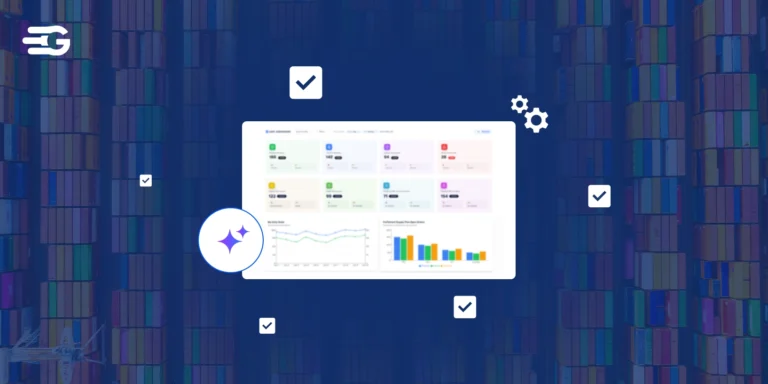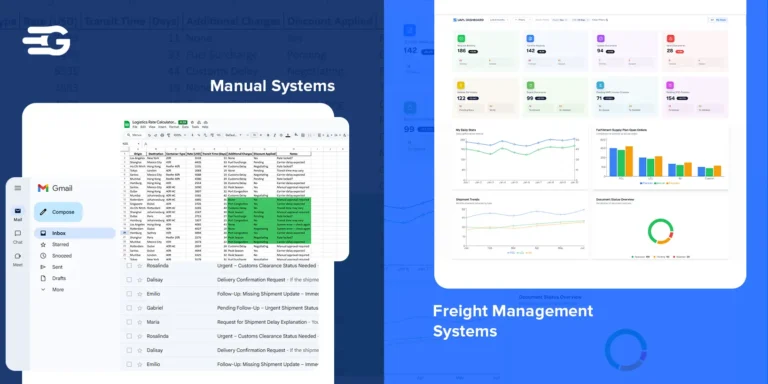What Is Sales and Operations Planning (S&OP)?
Sales and operations planning isn’t rocket science – it’s just getting your people to talk to each other regularly. Too many logistics companies run like separate kingdoms where sales does their thing, operations does theirs, and nobody coordinates until something breaks. Then everyone points fingers when customers start complaining about late deliveries or when you’re paying drivers overtime because nobody saw the surge coming.
The whole point is simple: get sales, operations, and whoever else needs to be there in a room once a month. Look at what’s coming, what you can handle, and make decisions before you’re in crisis mode. Let’s break down how to actually make this work for your business without turning it into another useless meeting.
Sales and Operations Planning – Simple Meaning
Sales and operations planning is a monthly meeting where your sales, operations, and finance teams align on what you can actually deliver to customers. Instead of each department guessing what the others are doing, everyone reviews the same numbers and makes coordinated decisions.
The process has four main parts:
- Reviewing demand forecasts from sales
- Checking your capacity (trucks, warehouse space, staff)
- Looking at the financial impact
- Making executive decisions about trade-offs.
What makes sales and operations planning different from regular meetings is the focus on planning 3-6 months ahead rather than just discussing last week’s problems.
The goal is simple – create one plan that everyone can execute instead of having sales promise deliveries that operations can’t handle. When done right, sales and operations planning becomes your early warning system for capacity issues and demand spikes before they become emergencies.
Why Sales and Operations Planning Matters for Logistics Companies
Here’s what happens in most logistics companies: sales tells a customer they can deliver 20 pallets to Chicago by Thursday, but operations already has all trucks committed to existing routes. Meanwhile, the warehouse is sitting half-empty because nobody told them about the surge coming next week. Finance finds out about the overtime costs after drivers have already worked the extra hours.
This chaos costs real money and frustrates customers. Sales and operations planning fixes this through four specific improvements:
- Stops Emergency Costs – No more paying drivers double-time because you promised same-day delivery without checking capacity. No more chartering emergency trucks at 2-3x normal rates because nobody saw the demand spike coming.
- Fewer Angry Customers – When sales knows you only have 15 trucks available, they stop promising deliveries that require 20 trucks. Customers get realistic delivery dates instead of broken promises.
- Uses What You Have – Your trucks aren’t sitting empty while you’re paying overtime elsewhere. Warehouse space gets used efficiently instead of scrambling for last-minute storage.
- Sees Problems Early – Spot the busy season crunch in February instead of panicking in November. Know about the driver shortage before you’re turning away profitable business.
Companies doing this right deliver on time more often and spend less money doing it. One of our clients using our centralized planning and visibility tools reported that their internal process efficiency improved by 20-30% once they stopped relying on fragmented communication channels.
Key Components of Sales and Operations Planning
Sales and operations planning works because it forces four different types of information into the same conversation. Each piece tells part of the story, but you need all four to make smart decisions about what your business can actually handle.
| Component | What It Covers | What You Actually Do |
| Demand Planning | What customers want | Look at signed contracts, sales pipeline, seasonal trends from last year |
| Supply Planning | What you can deliver | Count available trucks, warehouse capacity, driver schedules, route limitations |
| Financial Planning | What it costs | Calculate fuel, labor, storage costs; check if margins make sense |
| Executive Review | Final decisions | Choose between competing priorities, approve extra spending, resolve conflicts |
The process starts with sales bringing their numbers – not wishful thinking, but actual contracts and realistic pipeline forecasts.
Operations then checks if those numbers fit within truck capacity, warehouse space, and driver availability. Finance runs the math on costs and margins. Finally, executives make the tough calls about which opportunities to pursue and which to pass up.
This monthly cycle prevents the usual finger-pointing when things go wrong. Everyone sees the same numbers and agrees on what’s realistic before making commitments to customers.
How to Implement Sales and Operations Planning in Your Business
Starting sales and operations planning doesn’t mean buying expensive software or hiring consultants. You need the right people looking at the right information on a regular schedule. Most companies overthink this and never get started.
Step 1: Get the Right People Involved
You need people who can make decisions, not just collect information.
- Your sales manager who actually talks to customers.
- Your operations manager who knows truck capacity and driver schedules.
- Your finance person who tracks costs.
- Plus one executive who can break ties when departments disagree.
That’s it – keep it to 5 people maximum or you’ll spend all your time managing personalities instead of making decisions.
Step 2: Establish Monthly Meeting Cadence
Pick the third Tuesday of every month at 10 AM, or whatever works for your team. The key is making it predictable and non-negotiable.
Two hours minimum – you can’t rush through pipeline reviews, capacity planning, and decision-making in 30 minutes. Cancel other meetings if necessary, but don’t skip this one. Consistency matters more than perfection when you’re starting out.
Step 3: Create Standardized Reporting Formats
Make simple templates so everyone brings the same type of information.
Sales shows customer commitments for the next 3 months, not vague “we might close this deal” speculation. Operations shows truck availability by week, warehouse capacity, and known constraints like driver vacations. Finance shows actual costs per route and margin analysis. Use the same format every month so you can spot trends and changes quickly.
Step 4: Define Decision-Making Authority
Decide upfront who makes what decisions. Can the operations manager reject a delivery commitment if trucks aren’t available? Can sales adjust pricing without finance approval? Can anyone authorize overtime or extra trucks?
Write these rules down and stick to them.
Most arguments happen because nobody knows who has final say on different issues.
Using Technology To Streamline Your Sales and Operations Planning
The real pain hits when you’re trying to coordinate multiple stakeholders across different locations and time zones. Your sales team in Atlanta needs capacity updates from operations in Dallas, finance approval from Chicago, and customer confirmation from three different shipping locations.
Good luck getting everyone on the same page using email and spreadsheets. On the other hand, as per Forbes, companies implementing technology-enabled sales and operations planning can achieve revenue growth exceeding 30% and inventory reductions approaching 50%. But these gains come from solving the fundamental coordination problems, not just buying software.
GoComet’s GoShipment platform puts everyone in the same digital workspace instead of playing telephone tag across multiple systems.
Here’s how it actually helps your sales and operations planning:
- One Place for Everything – Your monthly planning meeting uses real-time data from the platform instead of everyone bringing different spreadsheets with conflicting information.
- Early Warning System – Automated alerts show when shipments are running behind schedule or costs are exceeding budgets, giving you advance notice for next month’s planning discussion.
- Performance Tracking – See which routes consistently run over budget or behind schedule, so your sales and operations planning can address systematic problems instead of just reacting to individual incidents.
Long story short: you can see what’s happening with every shipment, who’s responsible for what tasks, and where potential problems are developing before they blow up your plans.
Final Thoughts
Getting started with sales and operations planning means picking a date for your first monthly meeting and sticking to it. Don’t wait for perfect data or the ideal software – use whatever spreadsheets and reports you have now. The goal is building the habit of coordinating before problems hit, not creating the perfect planning system on day one.
Once your monthly meetings become routine, look for technology that can centralize your stakeholder communication and automate task tracking. Platforms like GoComet’s GoShipment help eliminate the email chaos and spreadsheet confusion that undermines good planning decisions. Book a demo today to see automation in action.





